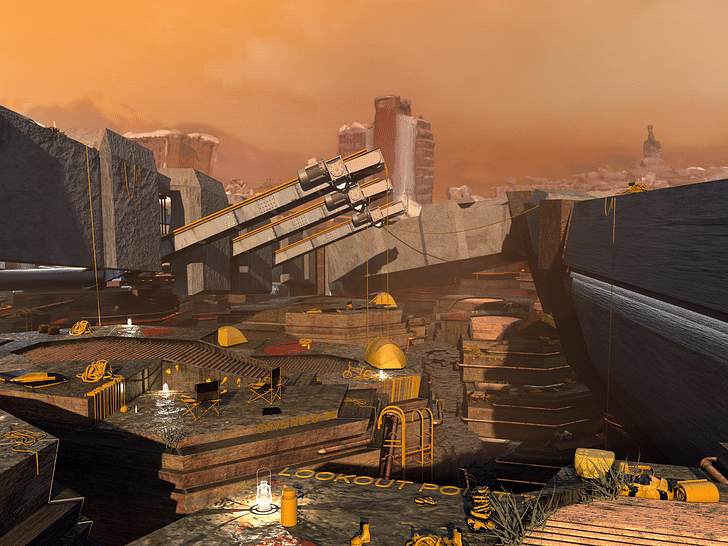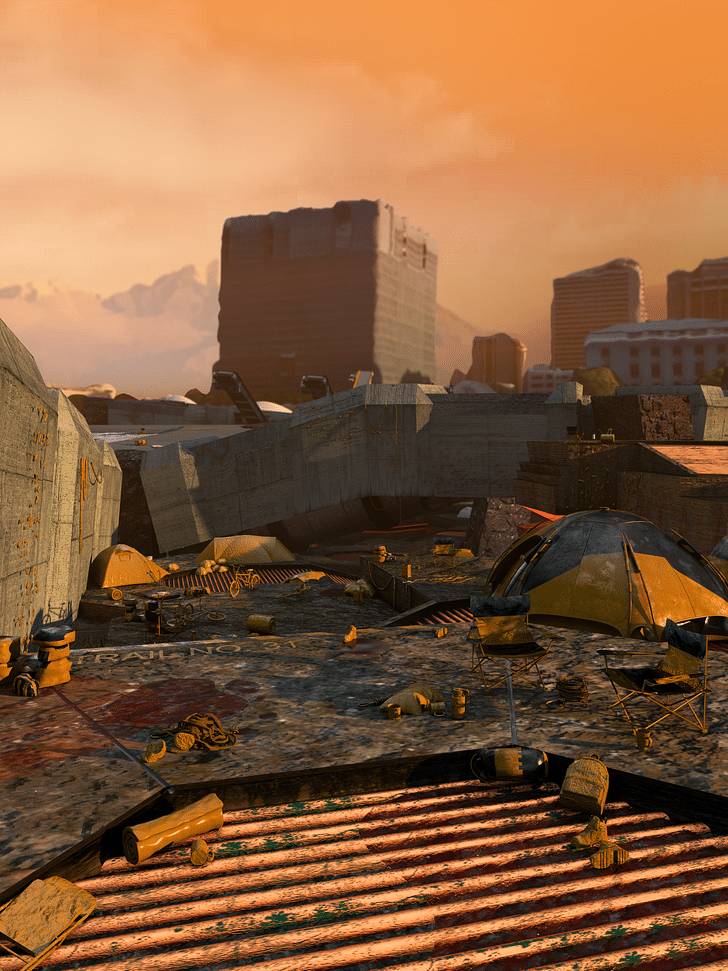

Genevieve Dominiak and Hannah Michaelson are students in Syracuse Univesity's School of Architecture B.Arch program. Archinect was able to connect with Dominaik and Michaelson to explore their final project The Hive: Coalescence with Unlikely Companions.
Along with guidance from their thesis advisors Daniele Profeta, Greg Corso, and Kyle Miller, the two students pose the question "how can architecture foster this collision of two ecologies: the human and [American's] toxic subculture? Both Dominaik and Michaelson were recognized by their university and received the 2019 Academic Year Research Grant for their project as well as the 2019 Summer Research Grant for an additional research venture titled Today’s Mythmakers, Tomorrow’s Narratives.
Archinect's Spotlight on 2020 Thesis Projects: 2020 has been an extraordinarily challenging year for architecture graduates. Students were displaced as schools shut down, academic communities had to adapt to a new virtual format, end-of-year celebrations were canceled or changed dramatically, and now these students are graduating into an extremely challenging employment market. To support the 2020 class we're launching a summer series of features highlighting the work of thesis students during this unique time of remote learning amid COVID-19. Be sure to follow our 2020 thesis tag to stay up to date as we release new project highlights.

Briefly describe your thesis/final project and your inspiration.
“The Hive: Coalescence with Unlikely Companions” aims to offer a third space in which Human Ecology coalesce with the previous erasures of Toxic Ecology. Rather than remediate these industrial sites and thus revive nature, the work looks to coexist with the consequences of our past and ongoing present through myth. The curiosity of myth began with on-site research of Icelandic folklore. In Iceland, the strength of their cultural heritage actively engages with community design as the society believes in a parallel community of Huldufólk - or hidden people- living in rocks. To engage with America’s subculture of toxicity in a parallel manner, we ask ourselves, how can architecture foster this collision of two ecologies: the human and the toxic?
To engage with America’s subculture of toxicity in a parallel manner, we ask ourselves, how can architecture foster this collision of two ecologies: the human and the toxic?
To enhance the dissonance of the fictitious American landscape and the authentic reality we refuse to acknowledge, the Hive makes space for an extraordinary companionship with toxic ecology. An intensified third space contests current culture with the reality of its own ignorance. Already challenged with dueling identities, the tensions between ecologies often partitioned brings into question Salt Lake City’s accountability and thus the myth of the Hive.
As studios transitioned to remote collaborations, a new conversation of media presentation became an active element of design [...] there was a new agency in how the material is presented and received.
How did your thesis change as studios transitioned to remote learning?
As studios transitioned to remote collaborations, a new conversation of media presentation became an active element of design. Without the default of pinning up projects or physical models, there was a new agency in how the material is presented and received. To pivot a long term project in this way brought forward a new focus on how we can articulate our continued ideas and design through a new unanticipated platform. Therefore, we transitioned model ideas to new animations and curated a website, https://www.thehive-slc.info/, in place of a physical pin up.
Additionally, since our project dealt with indefinite quarantines, the COVID-19 pandemic posed new questions of how our project would be received in the end. The pandemic presented an uncanny relationship to a previously fictional thesis based on myth. This relationship did not go unnoticed and we asked ourselves, are people more provoked to realities they weren’t previously exposed to?
Thesis is always still a work in progress, you are still learning new programs and gaining knowledge, the quarantine is another opportunity to learn a new way to collaborate.
"The HIVE: Coalescence with Unlikely Companions" video courtesy of Genevieve Dominiak and Hannah Michaelson.
Any tips for students working through their thesis?
Since we were able to physically work together, we kept each other motivated to continue designing and collaborating. For us, our advice would be to take the time to find someone you work well with, both the collaboration and topic become more rigorous if you can keep each other passionate.
With theses you get what you put into it, even if it is hard to find motivation keep the end result in mind, it will pay off. However, definitely give yourself a break, it is easy to get sucked in when there are no schedule limitations, there is no reason to exhaust your motivation. Thesis is always still a work in progress, you are still learning new programs and gaining knowledge, the quarantine is another opportunity to learn a new way to collaborate.
Katherine is an LA-based writer and editor. She was Archinect's former Editorial Manager and Advertising Manager from 2018 – January 2024. During her time at Archinect, she's conducted and written 100+ interviews and specialty features with architects, designers, academics, and industry ...
No Comments
Block this user
Are you sure you want to block this user and hide all related comments throughout the site?
Archinect
This is your first comment on Archinect. Your comment will be visible once approved.